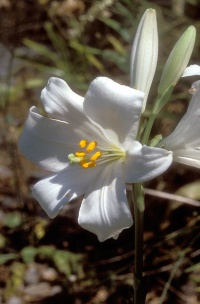Login to edit
An inheritance group references a group of content elements. It extends the functionality of the element group by passing on the content element configuration down the navigation tree.
OpenCms 8.5 Demo Content
Search for content
Page subscription
Most Recent News
Exciting new Acacia variety discovered
Sep 24, 2012
An element group (like this one) allows you to group multiple content elements together and share them on several pages.
Lily

The genus Lilium are herbaceous flowering plants normally growing from bulbs.
They comprise a genus of about 110 species in the lily family, Liliaceae. They are important as large showy flowering garden plants.
Lilies are leafy stemmed herbs. They form naked or tunic-less scaly underground bulbs from which they overwinter. In some North American species the base of the bulb develops into rhizomes, on which numerous small bulbs are found. Some species develop stolons. A few species form near the soil surface.
Many species form stem-roots. With these, the bulb grows naturally at some depth in the soil, and each year the new stem puts out adventitious roots above the bulb as it emerges from the soil. These roots are in addition to the basal roots that develop at the base of the bulb.
Most species are deciduous, but a few species (Lilium candidum, Lilium catesbaei) bear a basal rosette of leaves during dormancy.
Seeds ripen in late summer. They exhibit varying and sometimes complex germination patterns, many adapted to cool temperate climates.
The large flowers have six tepals, are often fragrant, and come in a range of colours ranging through whites, yellows, oranges, pinks, reds and purples. Markings include spots, brush strokes and picotees. The plants are summer flowering.
Some species formerly included within this genus have now been placed in other genera. These include Cardiocrinum, Notholirion, Nomocharis and some Fritillaria.
This article uses material from the Wikipedia article Lilium and is licensed under the GNU Free Documentation License.


